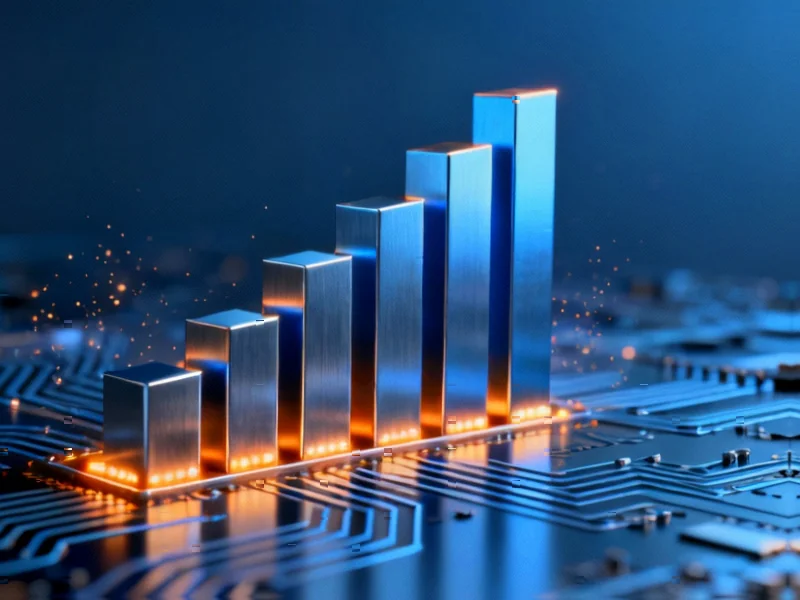According to Fortune, the K-shaped economy theory that emerged during the pandemic has been validated by economists, with startling data showing the top 10% of wealthiest Americans accounted for 49% of consumer spending in Q2 2025. Moody’s Analytics chief economist Mark Zandi traces this structural divergence back to Reagan-era policies that weakened labor in favor of capital income. Morgan Stanley’s Lisa Shalett revealed even more extreme numbers – the top 40% of households control 85% of America’s wealth and account for 60% of spending, with wealthy household spending growing 6-7 times faster than the lowest cohort. Federal Reserve Chair Jerome Powell acknowledged seeing a “bifurcated economy” where lower-income consumers struggle while higher-income households continue spending freely. The situation is exacerbated by tariffs that impact lower-income households three times more than the wealthy, according to Yale Budget Lab research.
How we got here
This isn’t exactly new territory. The concept actually dates back centuries – you can trace it to Percy Bysshe Shelley’s observation about the rich getting richer and poor getting poorer, or even further back to what’s called the “Matthew effect” from the Bible’s Book of Matthew. But something accelerated dramatically in the 1980s. Zandi points to globalization, declining unions, manufacturing shifts, and tax reforms that systematically favored capital over labor.
Here’s the thing though – the pandemic and subsequent policy responses supercharged this divergence. All that cheap money in the 2010s and early COVID years? It turbocharged stocks and home values. Then when the Fed started hiking rates – eleven times between 2022 and 2024 – it squeezed borrowers without really reversing those asset gains. So asset holders kept their windfall while wage earners got hammered by higher borrowing costs.
The reality on the ground
You can see this playing out in real time. Fast-casual chains like Chipotle and Cava are reporting lower-income customers, especially young people, pulling back and eating at home more. Meanwhile, we’re heading into what’s projected to be a $1 trillion holiday season with “Ralph Lauren Christmas” trending – but social media is flooded with budget hacks to achieve the look without actually shopping at Ralph Lauren.
And the job market tells the same story. If you have a job, you’re probably feeling relatively secure – layoff rates are still low. But if you’re Gen Z entering the workforce? Good luck. Companies are contracting after their post-COVID hiring sprees, and AI is starting to displace those entry-level positions. We’re looking at the largest October job cuts in two decades according to recent data.
Policy problems
What’s really concerning is how current policies might be making things worse. The Fed’s restrictive monetary policy, while intended to fight inflation, disproportionately hits financially constrained households. As former Fed economist Claudia Sahm notes, “This is the way restrictive monetary policy works: It’s going to hit households hardest who are more financially constrained.”
Then there are the tariffs. The Yale research shows these import taxes hit lower-income households more than three times harder than the wealthy. Why? Because they spend a larger percentage of their income on essential goods that get taxed. Meanwhile, Powell’s own recent FOMC comments acknowledge the split but offer little in terms of solutions.
Where this is heading
The scary part is that several economists think this divergence might be permanent without major policy changes. Zandi argues the Fed can’t fix this – they can only stabilize prices and employment. The distributional effects require fiscal policy solutions. But we’re not seeing much movement there.
What we are seeing is the middle class getting pushed into the lower half of that K. People making around $100,000 are increasingly shopping at Walmart and Dollar General. Consumer sentiment data shows low-income Americans feeling far less confident about the economy than high-income groups – and that gap is widening.
Basically, we’ve created an economy where the wealthy drive growth through stock-market-fueled spending while everyone else struggles with inflation, higher borrowing costs, and a tougher job market. And the tools we’re using to manage the economy might be making the divide worse rather than better. The question is: when does this become unsustainable?




